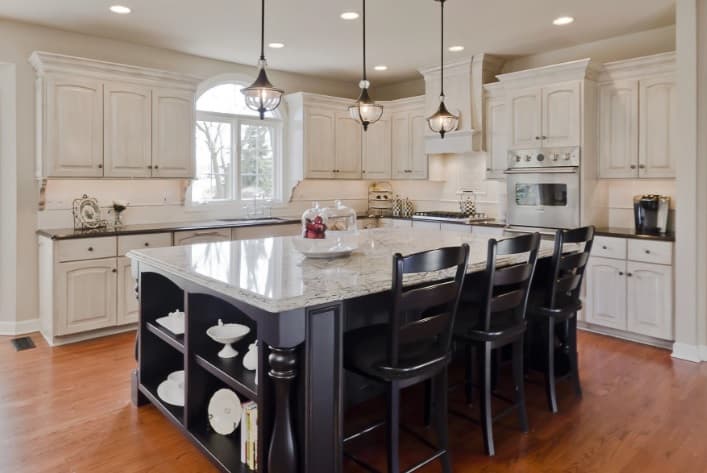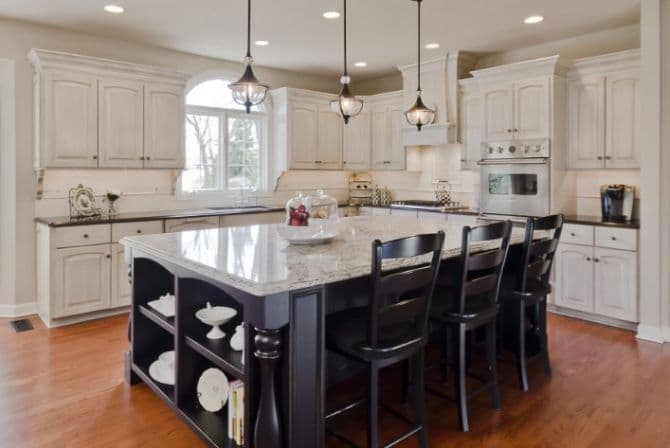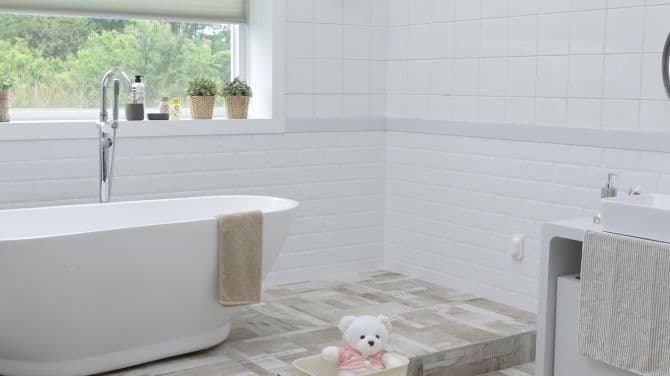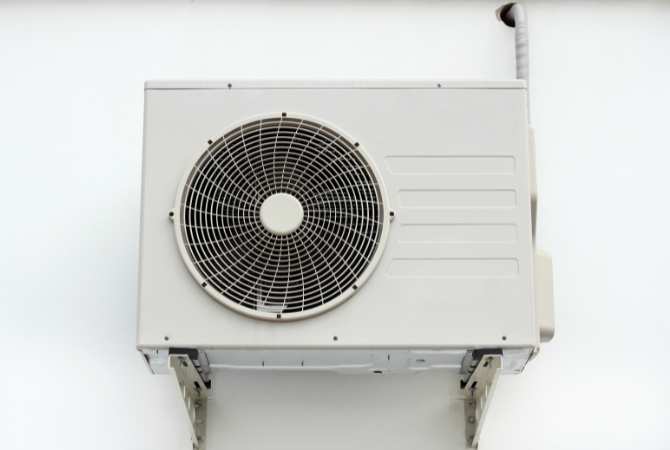Are you looking for a contractor?
Submit our quick form and get quotes now!
Table of Contents
5 min read
What You Need to Know About Recessed Lighting


5 min read
What You Need to Know About Recessed Lighting
Interior renovationsWhat You Need to Know About Recessed Lighting
Recessed lighting is a great feature and acts as a way to enhance any space by introducing more light. In fact, one of the reasons it is such a popular way to illuminate parts of your home is thanks to the way it can make small spaces feel bigger.
Recessed lighting is a form of light fixture that sits inside a hollow opening within the ceiling. With the light contained inside this housing, it helps to frame and concentrate the light downwards.
The first step to your recessed light conversion is to determine the application you desire. For the purpose of this article, we will focus on two: general lighting and accent lighting. General lighting is defined by its ability to brighten up general living spaces making it the ideal type of lighting for main rooms and family rooms.
Accent lighting is very different in that it is used more for highlighting and putting the focus on certain areas such as artwork or along the kitchen counters. Remember that accent lighting is not a primary light source. General lighting will primarily illuminate your home, however, accent lighting is meant to be used in conjunction with general lighting to help create certain moods.
There are three parts that make up the recessed lighting fixture: the housing, the trim, and the bulb itself. The housing is essentially the fixture itself which is installed and concealed within the ceiling. The trim is the exposed portion of the light whose edges are often flush with the ceiling. Lastly, there is the bulb itself. Please consult our article on lightbulbs for more information on how to choose the right one!
Different Recessed Lighting Housing Options
The housing holds the trim and bulb, connecting them to your home’s grid. However, there are several different kinds of recessed housings that can complement almost any lighting project.
New construction housings are ideal for when the house is being built and working around the existing drywall is of no concern;
Remodel housings are best used when the ceiling is already been put in place. This option allows you to drill a hole into the existing ceiling and simply insert the housing to secure it into place;
IC-rated housings or insulation contact are housings which are designed to come into contact with insulation without posing a fire hazard;
Non-IC housings are the opposite and touching insulation could pose a significant fire risk. For this type of housing you should ensure that any insulation is at least 3 inches away from the housing;
Airtight housings are the perfect option for energy-efficient air-conditioned spaces as they are designed to create a seal that stops air from escaping through the housing;
Low-profile housings are the option for you if you don’t have the necessary space above the ceiling for traditional housing. This model will give you the recessed lighting feel you’re looking for without having to carve out extra room.
When choosing your trim, remember that they are there to help conceal the fixture, help direct light downward and give your room that beautiful finished look. Settling on a specific trim isn’t an easy task when there are quite a few different types of trims to choose from.
Baffle trims are some of the most common you will find in a home and are considered general lighting. The light bulb rests far back inside to keep glare to an absolute minimum while the walls of the trim are usually grooved, which helps to contain and frame the light being directed toward you. Overall, baffle trims tend to soften the escaping light, giving the room a more subdued vibe.
Eyeball trim is unique in that it allows you to have physical control over the direction of the light. This is thanks to the fact that the socket rotates, giving you an exceptional range of motion for adjusting the stream of light. What is really remarkable about eyeball trims is that you can tilt the beam about 30° while being able to rotate the fixture almost a full 360°. Eyeball trims would fall under the category of accent lighting.
Gimbal trims work in a very similar manner in that they pivot so you can adjust where the light is shone. The major difference between gimbal and eyeball trims is that in gimbal trims, the turning of the socket is done within the housing meaning it juts out from the ceiling much less than eyeball trims do. The only major drawback of this type of recessed light is that, due to its design, the beam of light may be blocked somewhat by the trim. Gimbal trims are also an example of accent lighting.
Pinhole trims are perfect if you’re searching for precision in the light stream. Thanks to the pinhole effect, light that is forced through the hole appears to be concentrated into a strong single beam. Since they function almost like spotlights for your home, pinhole trims are perfect for any design philosophy that looks to emphasize certain elements of a room.
Reflector trims are a great way to amplify the amount of light within a given space. The trick of this trim lies in the shiny mirror-like interior of the housing that surrounds the bulb, helping its beams to be reflected and fill up the room. This trim works best for a space that needs to be brighter due to a lack of natural light or a space like a kitchen that can never have enough light.
Recessed shower lighting trims are specifically designed to withstand the consistent moisture levels within your bathroom. Perfectly tailored to be fitted right above your shower, the glass diffuser combined with the rubber gaskets of this trim creates a barrier to help block water and moisture from reaching inside and causing the fixture to wear out. If you wish to have the light in your shower dispersed more evenly then you should consider a domed glass diffuser to help increase the coverage of light.

Photo: Miserv
Various Trim Colour Options
To accommodate any room design and decorative style, recessed lighting trims are available in several colours to match. It is important to remember when selecting your trim colour that it can have an effect on how the light shines. Since dark colour trims have a tendency to absorb light, the measure of photometric efficiency (PE) is used to designate how effective the trim is at spreading as much light as possible.
Black trims are a very stylish choice depending on the space however they absorb quite a bit of light. Therefore, black trims will have a photometric efficiency of roughly 50%;
Satin nickel is a beautiful silver-like colour and thanks to its shiny housing walls, it has a high photometric efficiency of about 85%;
Copper is a great colour for any room and copper trims happen to be high performers with a photometric efficiency of about 90%;
Chrome trims have arguably the least light absorption of all trim colours and materials. Thanks to its lustrousness, the chrome trim helps to reflect 100% of the light. This makes chrome trims the ideal choice for any room that you want to illuminate as much as possible. Chrome is a perfect choice for basements or rooms with little diffusion of natural light.
Choosing Line Voltage or Low Voltage
Line voltage is the standard form that is typically found in outlets at 120 volts which is the standard in Canada. While line voltage may offer fewer options, it is also cheaper in terms of purchase and installation costs but can cost more to operate over time since your energy use will be noticeable. However, this can be somewhat offset by the lower cost of the fixtures and bulbs. Low voltage, on the other hand, operates on 12-volt charges which require the installation of a transformer to lower the 120-volt standard to 12 volts.
It is important to note that the transformer is crucial if you don’t wish to burn out your low-voltage light bulbs. A unique feature of a low-voltage setup is that the more frequently it is used, the more cost-effective the system becomes, making it ideal for your home’s most frequently lit-up spots. If your home has high ceilings or you wish to have general light in space then line voltage will work best for you. However, if you’re looking for accent lighting that will be less frequently used, low-voltage recessed lights will give you that precision while helping you save energy.
How many recessed lights should you install?

Photo: Unsplash
Deciding how many lights to install is a big part of the job as it depends on both the room size and the effect you wish the light to have. One of the most basic ways to get an idea of how many lights will be appropriate for the space is to take the height of the ceiling and then divide that number into two. This number will be the rough distance that should be between each recessed light. Therefore, an 8-foot-tall ceiling should be about 4 feet from one another.
The Average Cost of Recessed Lighting
As you can see there are a lot of choices and they can all impact how much the final job will end up costing you. First, let’s start by gauging the cost of the bulbs. Assuming your space will require 6 recessed lights to be properly illuminated and you choose compact fluorescent light bulbs at 10 apiece you’re looking at about $60 on bulbs. Basic recessed lighting should cost at least $30 for each housing and another $25 for each trim. So just acquiring the parts should cost about $400 on the low end and this estimation is without the cost of labour for installation factored in.
A few things to keep in mind about recessed lighting
Now you have all the pertinent information to help you choose the right type of recessed lighting for your home. If you’ve decided to take the leap and move forward with the installation, here are some things to consider:
While recessed lighting is great, you shouldn’t rely on it to illuminate every part of your home. This type of fixture on its own may leave a space feeling too stark so it’s important to figure out the right mix of recessed and alternative forms of light.
Try not to keep your recessed lights too far from the wall. If the proximity to the wall is too great, it hinders the light from hitting the walls at a proper angle to illuminate and may instead create unintended dark areas, making the room feel like a cave.
Recessed lighting can be just the thing to transform your home but it’s always important to consult a professional for their opinion on whether what you’ve chosen will genuinely work to enhance your space. Of course, for jobs of this nature, it’s absolutely fundamental to use the professionally licensed services of a general contractor and electrician.
Author: David Ben-Zaken
Get 3 renovation quotes for your recessed lighting project
RenoQuotes.com can help you get quotes for your recessed lighting project. By submitting your project, we’ll put you in contact with top-rated contractors. Fill in the form on the homepage (it only takes a few minutes), and you will get estimates from trusted professionals.
Dial 1-844 828-1588 to speak with one of our customer service representatives.
Last modified 2023-11-07
Looking for something else?
Related articles
The latest industry news, interviews, technologies, and resources.

N/A • 07 Nov 2023
During the cold winter months, having a water heater that operates correctly is integral to staying warm. There are plenty of ways to increase the efficiency of a water heater, but the key is knowing how to check its status.

Léa Plourde-Archer • 07 Nov 2023
A heat pump is an important purchase for your home and it often helps solve temperature variation issues indoors. Daikin offers options and features that suit all needs and budgets. We will explore this subject in the following paragraphs.

RenoQuotes.com • 25 Jan 2024
Needless to say, the long-term durability of a house depends heavily on the lack of seepage, above all in the foundation. Excessive humidity can have devastating and damaging long-term effects, both on your home and your health. Moreover, mould and bacteria growth can end up being very costly.

RenoQuotes.com • 07 Nov 2023
We’d all love for our interior and exterior walls to stay bright and fresh as if newly painted. Of course, paint doesn’t last forever and will often give in to the effects of time as well as the wears of everyday life. Have you noticed your paint starting to have a discoloured appearance? If you run your hands over your walls and find a white, chalky substance, this means that you’re dealing with something referred to as paint chalking.

Léa Plourde-Archer • 07 Nov 2023
The floor is one of the basic surfaces to be considered when designing the layout of a room. You have to think about practicality, the resistance of the material you've chosen and the aesthetic aspect of the surface.